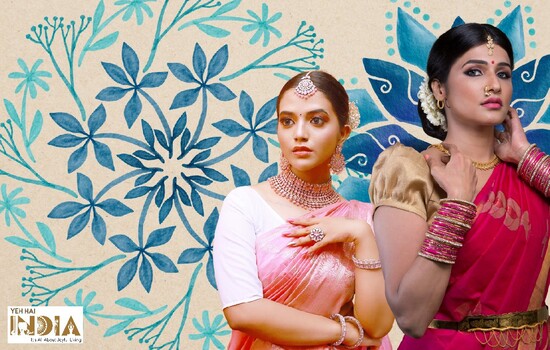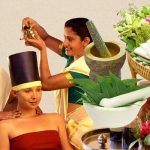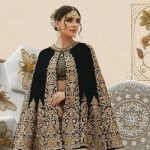A saree is an extremely versatile clothing item that can be draped into different styles to suit different occasions.
Fashion trends may come and go, but on an important traditional occasion, we all find ourselves reaching for one garment only: the saree. Sarees are a ubiquitous garment in India that always brings out your best personality.
Every region has their own style of draping them, each of the traditional saree draping styles is unique and elegant. Today, we hope to take you on a tour of the country through its different saree draping styles.
10 Best Saree Drapes From Different Indian States:
1. Nauvari Saree

Nauvari sarees are known by many names but are instantly identifiable on sight due to their distinct loom. Maharashtra’s beloved saree literally translates to the nine-yard saree.
It involves wearing the bottom half like a dhoti with one end going from the front to the back between the legs. The upper end is draped like a normal saree over one shoulder.
The nauvari drape allows for free movement of the legs and its elegance is best shown during the Lavani dance.
Recommended Story – Saree- The Indian Dress
2. Mekhela Chadar
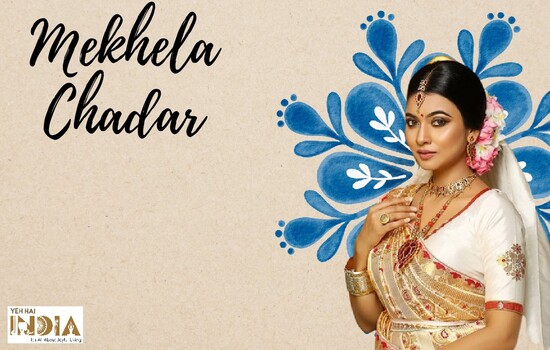
Mekhela Chadar refers to handloom sarees that are unique to Assam and also in the style they are draped. Worn mostly by young women, the saree constitutes two pieces.
The bottom half is worn like a sarong with pleats in the front while the upper half is tucked into the waistband and draped over the shoulder.
The bottom pleats are tucked to the right and have fewer pleats as compared to a typical saree.
3. Namboothiri Style

The Namboothiri refers to an ancient and rather distinct style of draping that is unique to Kerala. While it does not have the archetypal draping of the saree over one shoulder, this look remains iconic.
It is, in fact, the oldest remnant of the form of sarees that cover only the lower half of the body. The mundu or the lower garment is worn around the waist while the neriyatu or the upper garment is tucked into the blouse.
4. Kappulu Style
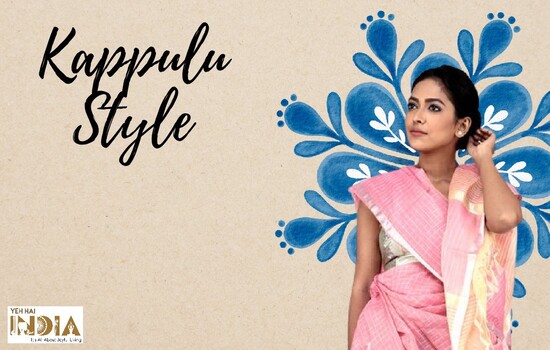
This elegant style of saree is often worn by older women in Andhra Pradesh. It is distinct due to the slender pleat at the back and the way the cloth is twisted around the body twice from left to right, unlike normal sarees.
It has almost a Grecian flair to it. The pallu is then taken from the front over the right shoulder and left to hang loose or wrapped around the neck.
The longer the saree that is draped in Kappulu style, the better it looks.
5. Purnia Style
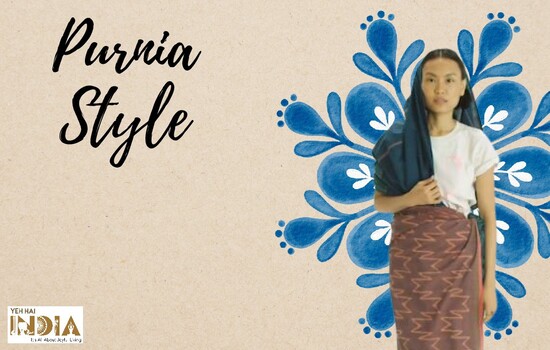
This is a style originating in North-Eastern Bihar with the pallu draped over the right shoulder and the head before being tucked in at the waist towards the left.
It is unique for not having any front pleats. This is a rather conservative style of draping a saree that allows them to cover their heads.
This is one of the loveliest draping styles in different states.
6. Coorgi Style
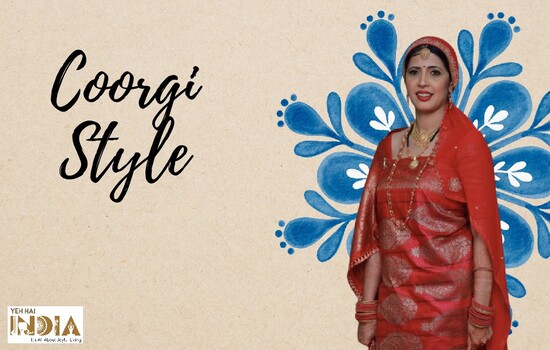
Coorg is a hill station located in the Western Ghats of India and developed especially to make manoeuvring the hilly region easier.
This style has pleats in the back and the end of the saree is brought back from under both shoulders and secured on the right shoulder with a knot.
Kanjeevaram sarees made out of red or gold silk are often worn in this style by brides at their weddings.
It is often also referred to as Kodagu style saree or Kodava attire. This style of saree is mentioned even in the stories of Agasthya and Kaveri.
7. Atpoure Saari
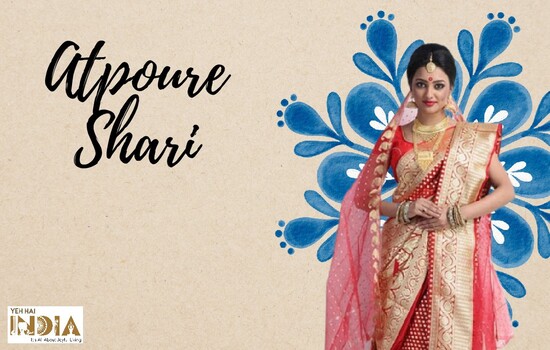
It is one of the most distinctive sarees visually both in how it is draped and the pure white appearance of it which is bordered neatly by a red stripe.
It is worn with box pleats in the front and the pallu draped over the left shoulder and then brought forward to drape over the right shoulder as well.
Traditionally, a Bengali woman would attach a ring of keys to the end of the pallu over her right shoulder which would signify them as an individual of importance or the most important woman in the household.
The namesake of the saree is the Atpur town located in Hooghly which was once famous for producing coarse sarees and dhotis for everyday wear.
8. Pinkosu Style

In the boiling warmth of Tamil Nadu, wearing a saree is an intimidating endeavour. So this style of saree draping developed in Tamil Nadu is suitable for the hot weather.
In this style, the saree is wrapped around the body one and a half times so that the pleats fall at the back, as suggested by the name ‘pinkosu’ which literally translates to pleats at the back.
Since the pleats fall towards the outside, the underside of the saree shows and hence, the saree must be chosen accordingly. Handloom sarees are often worn in this style as they are reversible.
We recommend cotton sarees as they will keep you cool in the hot Tamil Nadu climate as they can be worn without a petticoat.
9. Gol Saree
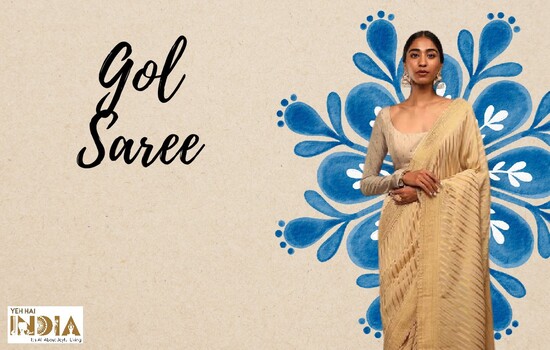
Parsi women often wear this style of saree during festivals and other special occasions.
The pallu is draped from behind and wraps all around the blouse on the left shoulder and is draped over the right shoulder from the back so that it forms falls in the front.
The pallu is quite long in this style of saree and nearly reaches the hem. A light chiffon saree or a georgette saree is recommended with this style. The pallu is usually referred to as Gara by them.
10. Kunbi Drape
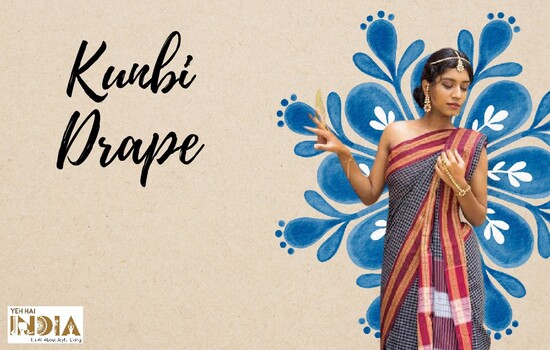
The Kunbi drape is a way of styling the saree from Goa that predates even the Portuguese and originates from the oldest tribe of Goa. It is an incredibly basic and easy to drape style that still somehow retains the elegance and grace of a saree.
It is draped around the waist and simply knotted on the right shoulder. A unique feature is how high above the ankles the hem is knotted to help women working in the fields move easily.
Traditionally, the saree is woven in large checks of red and black and worn with a puffed sleeve blouse and red and green bangles.
We hope this guide featuring saree draping styles in India helps you decide which way to drape yours on your next outing!
Whichever look you choose, give full attention to the drape and the right accessories to bring out the diva in you, no matter what occasion it may be.
Also Read – A-Z List of Traditional Sarees from states of India


